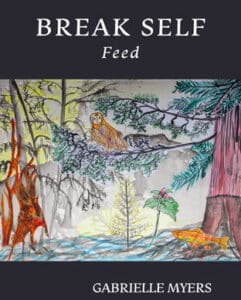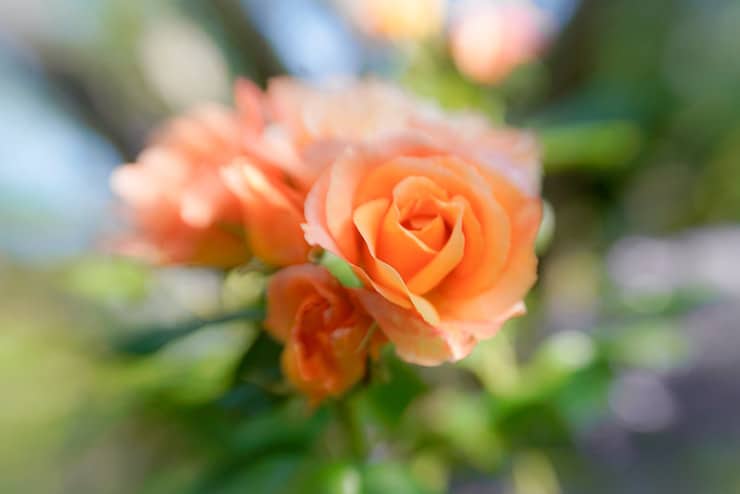Gabrielle Myers uses poetry to ask, “What is our place in nature?”
I read the poems in Break Self: Feed by Gabrielle Myers, and what comes almost immediately to mind ae the paintings of Georgia O’Keefe. I’m reminded of not all of O’Keefe’s paintings, but the ones of flowers and other natural objects that might be what’s being portrayed, and also might be some part of the human anatomy. O’Keefe’s paintings are sensual; so, too, are the poems by Myers.
This isn’t coincidental or accidental. Myers is too careful of a writer, too deliberate in her choices of words. Her poems intricately combine features of the natural world with humanity, suggesting we are not only closer to nature than we think we are but also a very intimate part of it.
And then some of the poems are simply sensual,
The word I’d use for the collection is dazzling.
Myers writes of the physical world we’re part of – earth, trees, flowers, water, wind, seeds, rain, seasons, mountain fires, dust mites in sunlight, apples, birds, sand dunes, and more. Each poem is a recognition of our oneness with nature, no matter how isolated we are from it or how many miles of concrete separate us from it. It could be what’s growing in that pot on your patio: “What part of us lingers, lunges like a fevered bat / into a pepper plant’s shade as it unfurls its verdant leaves?” (from “Be in Lust with Life”).
We’re one with nature even when, and perhaps especially when, we sleep.
Expansion

Our sheets become large limbs arcing into wood floor;
our arms lengthen into year-old roots that push
us against each other, against mattress.
Lupine sprout from our eyes; bees emerge
from our lips; in our ears, crickets sing,
etch still air with an incessant song.
Sheets turn into loam, our feet dip
into a small pond fecund
with tadpoles growing into frogs—
frogs that with their peeps usher forth spring.
Our fingers touch, we fuse with mycelium networks,
spores launch from our nails,
ring in our evolution’s new tale.

Gabrielle Myers
Myers is a writer, poet, teacher, editor, and chef who lives in California’s Sacramento Valley. She previously published a memoir, Hive-Mind, which describes her awakening and transformation on an organic farm, and her first poetry collection, Too Many Seeds. Her poems have been published in The Adirondack Review, San Francisco Public Press, Fourteen Hills, Evergreen Review, pacific-REVIEW, Connecticut River Review, Catamaran, and other literary journals. She worked as a cook and chef at several San Francisco-area restaurants and catering companies. She is currently a tenured professor of English at San Joaquin Delta College.
Break Self: Feed uses carefully crafted words to remind us of the world we live in, still the big, raw, verdant, lusty, exuberant world of nature. To acknowledge this world and our place in it implies a responsibility to care for it.
Related:
Gabrielle Myers and Too Many Seeds: Poems.
Photo by Judy Dean, Creative Commons, via Flickr. Post by Glynn Young.
How to Read a Poem uses images like the mouse, the hive, the switch (from the Billy Collins poem)—to guide readers into new ways of understanding poems. Anthology included.
“I require all our incoming poetry students—in the MFA I direct—to buy and read this book.”
—Jeanetta Calhoun Mish
- Poets and Poems: Autumn Williams and “Clouds on the Ground” - November 20, 2025
- The Manuscript of “The Waste Land” by T.S. Eliot - November 18, 2025
- “The Summer We Crossed Europe in the Rain” by Kazuo Ishiguro - November 13, 2025


Leave a Reply